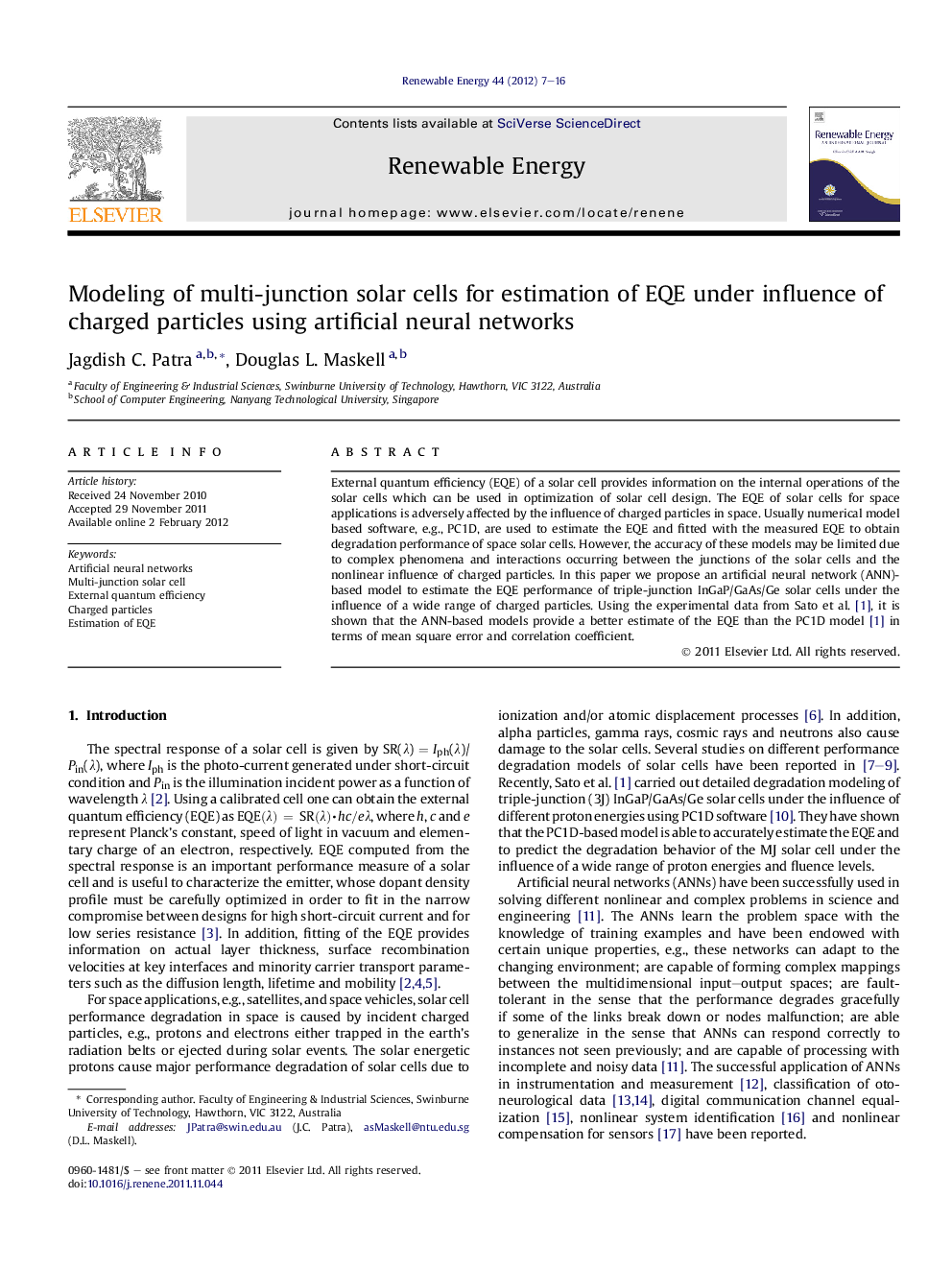| Article ID | Journal | Published Year | Pages | File Type |
|---|---|---|---|---|
| 300794 | Renewable Energy | 2012 | 10 Pages |
External quantum efficiency (EQE) of a solar cell provides information on the internal operations of the solar cells which can be used in optimization of solar cell design. The EQE of solar cells for space applications is adversely affected by the influence of charged particles in space. Usually numerical model based software, e.g., PC1D, are used to estimate the EQE and fitted with the measured EQE to obtain degradation performance of space solar cells. However, the accuracy of these models may be limited due to complex phenomena and interactions occurring between the junctions of the solar cells and the nonlinear influence of charged particles. In this paper we propose an artificial neural network (ANN)-based model to estimate the EQE performance of triple-junction InGaP/GaAs/Ge solar cells under the influence of a wide range of charged particles. Using the experimental data from Sato et al. [1], it is shown that the ANN-based models provide a better estimate of the EQE than the PC1D model [1] in terms of mean square error and correlation coefficient.
► Artificial neural network (ANN)-based model to estimate EQE of solar cells. ► Triple-junction (3J) solar cell under influence of wide range of charged particles. ► ANNs used to capture nonlinear phenomena of 3J solar cells. ► ANN-based models provided better results than the PC1D-based model.
